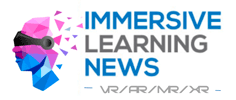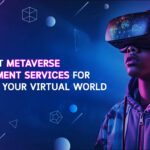In today’s era of digital evolution, technological advancements continuously reshape various facets of our lives, including education. Augmented reality (AR) stands out as a potentially transformative tool with immense capacity to revolutionize how students acquire knowledge and engage with educational materials. By overlaying digital data onto the real world, AR creates an immersive and interactive learning experience. Let’s delve deeper into the benefits of integrating augmented reality into learning settings, uncovering its transformative power.
Let’s understand what is Augmented reality before talking about advantages of AR
Augmented reality (AR) are technologies that overlay digit information, like pictures, videos, or 3D models, onto the real-world setting, enhancing the user’s perception of authenticity. Unlike virtual reality (VR), that immerses users within an entirely digital world, AR’s supplement the physical universe within digital elements. AR technologies typically depend on devices like smartphones, tablets, or specialised AR glasses to convey the augmented experience. Through the integration of computer-generated content into reality, AR provides a variety of applications across varied industries, including education, gaming, healthcare, retail, and more. In education specifically, enhanced realism holds a significant promise for transforming traditional learning experiences by providing immersible and interactive tools for teaching and learning. By superimposing digital contents onto physical objects or environments, AR allows students to visualise abstract concepts, engage in hands-on simulations, and personalise their learning experiences. This technology fosters increased involvement, collaboration, and comprehension among learners, ultimately enhancing their overall educational outcomes!!!
Benefits of Augmented reality in education
1.Boost Engagement and Interactivity
One of the most crucial benefits of augmented reality in education is its knack to captivate the attention of students and boost their engagement with the learning materials. By combining virtual elements with the tangible environment, AR converts conventional educational lessons into interactive practices, making learning more interesting and unforgettable. Students can handle virtual objects, explore complicated ideas in 3D, and take part in immersive simulations that mimic real-life scenes.
2.Visualizing Confusing Ideas
Augmented reality provides a robust option for visualising perplexing notions that prove challenging to grasp using traditional teaching strategies. Whether it’s about comprehending the composition of molecules in chemistry, exploring the solar system in astronomy, or dissecting virtual creatures in biology, AR allows students to visualise and engage with complex ideas in a manner that encourages deeper understanding and retention.

3.Personalized Learning Atmospheres
Another advantage of augmented reality in education is its ability to streamline tailored learning experiences. AR applications can adjust to individual learning styles and speeds, offering customised content and feedback to cater to the distinctive requirements of each learner. This individualised methodology enables instructors to cater to diverse learning preferences and abilities, culminating in better learning outcomes.
4.Fostering Group Work and Collaborative Learning
Augmented reality fosters group work and collaborative learning by enabling students to collaborate on interactive ventures and simulations. Whether they’re resolving puzzles, conducting virtual experiments, or collaborating on artistic ventures, AR stimulates teamwork, communication, and problem-solving competencies. By promoting a cooperative learning environment, augmented reality primes students for the collaborative dynamics of the contemporary labour force.
5.Bridging the Gap Between Theory and Application
A fundamental challenge in education is bridging the gap between theoretical understanding and real-world usage. Augmented reality tackles this challenge through supplying immersive simulations and practical experiences that allow students to exercise their knowledge in hands-on settings. Whether it’s rehearsing surgical operations in medical education, mimicking historical episodes in social studies, or exploring architectural designs in engineering, AR bridges the chasm between theory and implementation, readying students for future triumphs.
6.Access to Distant and Experiential Learning Chances
Augmented reality also enables access to learning opportunities beyond the confines of traditional classrooms, enabling students to partake in remote learning experiences and virtual field trips. Through AR applications, students can roam historical sites, check some distant planets, or plunge into underwater ecosystems, all virtually from their classroom. This access to experiential learning chances enhances students’ viewpoints and nurtures a deeper understanding of their surroundings.
Conclusion
In conclusion, augmented reality showcases immense potential in reshaping education by elevating engagement, illustrating abstract ideas, personalising learning atmospheres, encouraging collaboration, merging theory with practice, and granting access to remote learning occasions. By harnessing the power of AR technology, educators can sculpt dynamic and immersive learning environments that instill curiosity, creativity, and lifelong learning.
As we embrace the digital era, integrating augmented reality into education signifies a notable stride in gearing up students for the challenges and opportunities of the 21st century. By harnessing the perks of AR, we can authorise the subsequent cohort of learners to unlock their full capabilities and design a brighter future for themselves and society as a whole.
Quelle:



